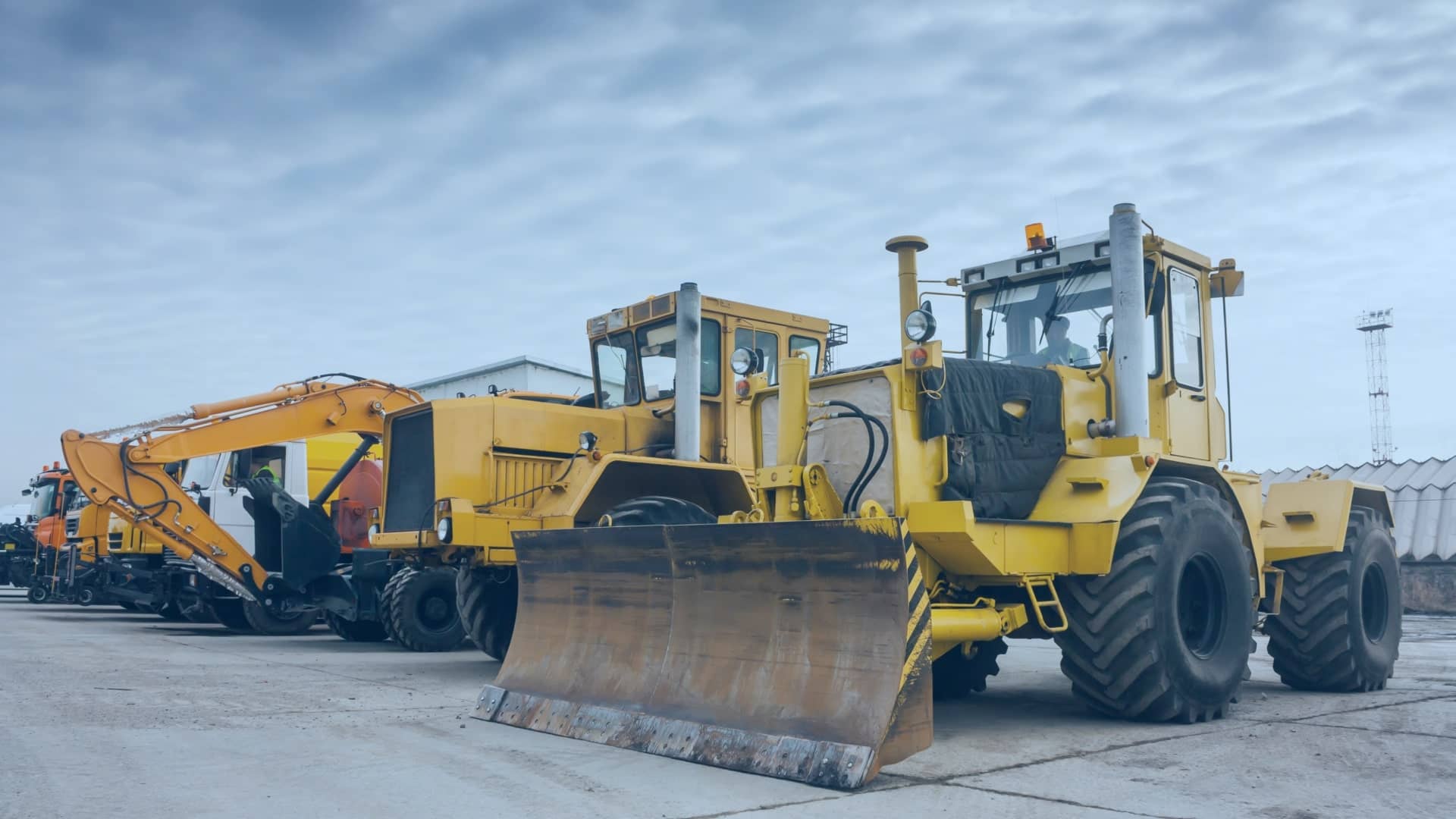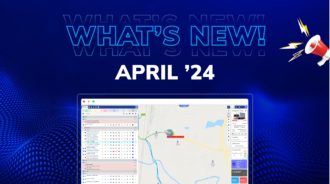The construction industry, known for its rigorous demands and challenging environments, is witnessing a significant transformation thanks to the advent of Artificial Intelligence (AI). One area where AI is making a remarkable impact is in tire monitoring. This advancement is not just a leap in technology; it’s a game-changer for construction companies. In this blog, we’ll delve into how AI-driven tire monitoring is revolutionizing the construction industry, focusing on the trends and the unique features of our tire monitoring solutions.
Introduction to AI in Tire Monitoring
In recent years, AI has infiltrated various sectors, bringing efficiency and innovation. In the realm of construction, AI-driven tire monitoring systems are emerging as a pivotal technology. These systems offer real-time data, predictive analytics, and unparalleled accuracy, ensuring that vehicle fleets are always in top-notch condition.
The Importance of Tire Monitoring in Construction
Construction sites are demanding environments for vehicles. The rough terrain and heavy loads can quickly wear down tires, leading to costly downtime and safety hazards. This is where effective tire monitoring comes into play. By keeping a close eye on tire health, construction companies can avoid these pitfalls, ensuring that their operations run smoothly and safely.
The importance of tire monitoring in the construction industry cannot be overstated. In this sector, where equipment reliability and operational efficiency are paramount, tire health plays a critical role. Here are some detailed aspects of why tire monitoring is so crucial in construction:
Safety
- Accident Prevention: Proper tire monitoring helps in identifying potential tire failures before they result in accidents. Construction sites are often hectic and hazardous, and tire blowouts or failures can lead to serious accidents.
- Worker Safety: Consistent tire checks ensure the safety of operators and workers on site. A well-maintained tire reduces the risk of accidents, thereby safeguarding workers.
Operational Efficiency
- Reduced Downtime: Regular tire monitoring can predict and prevent tire-related issues that cause downtime. In construction, equipment downtime can significantly delay projects and increase costs.
- Optimal Tire Usage: Monitoring helps in utilizing tires effectively, ensuring they are replaced or serviced at the right time, thereby maximizing their lifespan.
Cost Savings
- Preventive Maintenance: Identifying issues early through monitoring can lead to cost savings by preventing more extensive damage that is expensive to repair.
- Fuel Efficiency: Properly maintained tires improve fuel efficiency. Under-inflated or damaged tires increase fuel consumption, which is a significant expense in the construction industry.
Enhanced Performance
- Terrain Management: Construction sites often have challenging terrains. Regular tire monitoring ensures that the tires are in optimal condition to handle these terrains efficiently.
- Load Handling: Construction vehicles carry heavy loads, and effective tire monitoring ensures that tires can handle these loads without failure.
Compliance and Standards
- Regulatory Compliance: In many regions, there are strict regulations regarding vehicle and equipment maintenance in construction. Regular tire monitoring helps in complying with these regulations.
- Industry Standards: Maintaining tires is part of adhering to industry standards for equipment maintenance and safety.
Environmental Impact
- Reduced Carbon Footprint: Well-maintained tires contribute to lower fuel consumption, which in turn reduces the carbon footprint of construction operations.
- Waste Reduction: Efficient tire monitoring and maintenance lead to fewer tires being discarded prematurely, contributing to waste reduction.
Data-Driven Decisions
- Performance Tracking: Monitoring provides valuable data that can be used to make informed decisions about tire maintenance and replacement schedules.
- Fleet Management Optimization: For companies with large fleets of construction vehicles, tire monitoring is crucial for fleet management, while ensuring that all vehicles are in top condition.
How AI Transforms Tire Monitoring
Traditional tire monitoring methods rely heavily on manual inspections, which can be time-consuming and prone to human error. AI changes this by offering:
Real-Time Data and Alerts
AI-driven systems provide real-time data on tire pressure, temperature, and overall condition. This constant monitoring allows for the immediate detection of issues, enabling swift action to prevent accidents or downtime.
Predictive Maintenance
AI doesn’t just report the current state of tires; it predicts future issues. By analyzing trends and historical data, AI can forecast when a tire is likely to need maintenance or replacement, allowing for proactive planning.
Increased Efficiency and Safety
With AI, the guesswork in tire maintenance is eliminated. This leads to more efficient operations, as tires are maintained optimally, and risks of accidents due to tire failure are significantly reduced.
Features of Our AI-Driven Tire Monitoring System
Our tire monitoring system stands out with several key features:
Advanced Sensors
- Durability: The sensors are engineered to withstand the harsh and rugged conditions typically found on construction sites. They are resistant to dust, water, and extreme temperatures, ensuring reliable performance.
- Precision: These sensors provide highly accurate readings of tire pressure, temperature, and tread depth, allowing for precise monitoring and maintenance.
Intuitive Dashboard
- User-Friendly Interface: The dashboard is designed with user experience in mind, making it easy to navigate and interpret data.
- Real-Time Monitoring: It displays real-time data from the sensors, giving fleet managers immediate insights into the condition of each tire in their fleet.
- Customizable Views: Users can customize the dashboard to highlight the most critical information, like alerts or maintenance schedules.
Custom Alerts
- Threshold Settings: Users can set specific thresholds for tire pressure, temperature, and wear, receiving alerts when these parameters are breached.
- Immediate Notifications: Alerts are sent in real-time via email or SMS, enabling quick response to potential tire issues.
- Predictive Alerts: The system can also send predictive alerts based on historical data and usage patterns, indicating when a tire is likely to require maintenance.
Seamless Integration
- Compatibility with Existing Systems: The tire monitoring system integrates seamlessly with existing fleet management and maintenance software, providing a comprehensive view of vehicle health.
- API Access: It offers API access for custom integrations while allowing for flexibility in how the data is used and analyzed.
Predictive Analytics
- Trend Analysis: By analyzing historical data, the system can identify trends and predict future tire wear and maintenance needs.
- Maintenance Scheduling: This feature helps in scheduling maintenance and replacements at optimal times, reducing downtime and extending tire life.
Remote Monitoring Capabilities
- Anywhere Access: Fleet managers can monitor tire conditions from any location, provided they have internet access. This is particularly useful for large construction sites or multiple site management.
- Multi-Vehicle Tracking: The system can track tire conditions across a large fleet, allowing for efficient management of numerous construction vehicles.
Enhanced Reporting
- Detailed Reports: The system generates detailed reports on tire performance, while including wear patterns and maintenance history.
- Custom Reports: Users can create custom reports to focus on specific aspects of tire health, like tracking the effectiveness of maintenance actions.
The Trends in AI-Driven Tire Monitoring
Furthermore, The future of tire monitoring in the construction industry is exciting, with several trends emerging:
- Increased Automation: AI systems are becoming more autonomous, reducing the need for human intervention and further increasing efficiency.
- Integration with Other Technologies: AI tire monitoring is starting to integrate with other technologies like GPS and fleet management software, providing a holistic view of vehicle health.
- Enhanced Predictive Capabilities: As AI algorithms evolve, the predictive accuracy of these systems will only improve, while leading to even better maintenance scheduling and cost savings.
Conclusion
AI-driven tire monitoring is more than just a technological novelty; it’s a transformative tool that is reshaping the construction industry. By providing real-time data, predictive insights, and increased safety, these systems are not just monitoring tires; they’re paving the way for a more efficient, safe, and cost-effective future in construction.
In conclusion, the integration of AI in tire monitoring is a significant step forward for the construction industry. Companies can look forward to enhanced efficiency, safety, and operational excellence by adopting these advanced systems. The future looks bright, and AI-driven tire monitoring is undoubtedly leading the charge.



